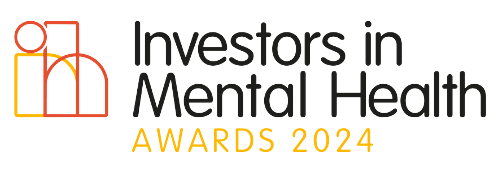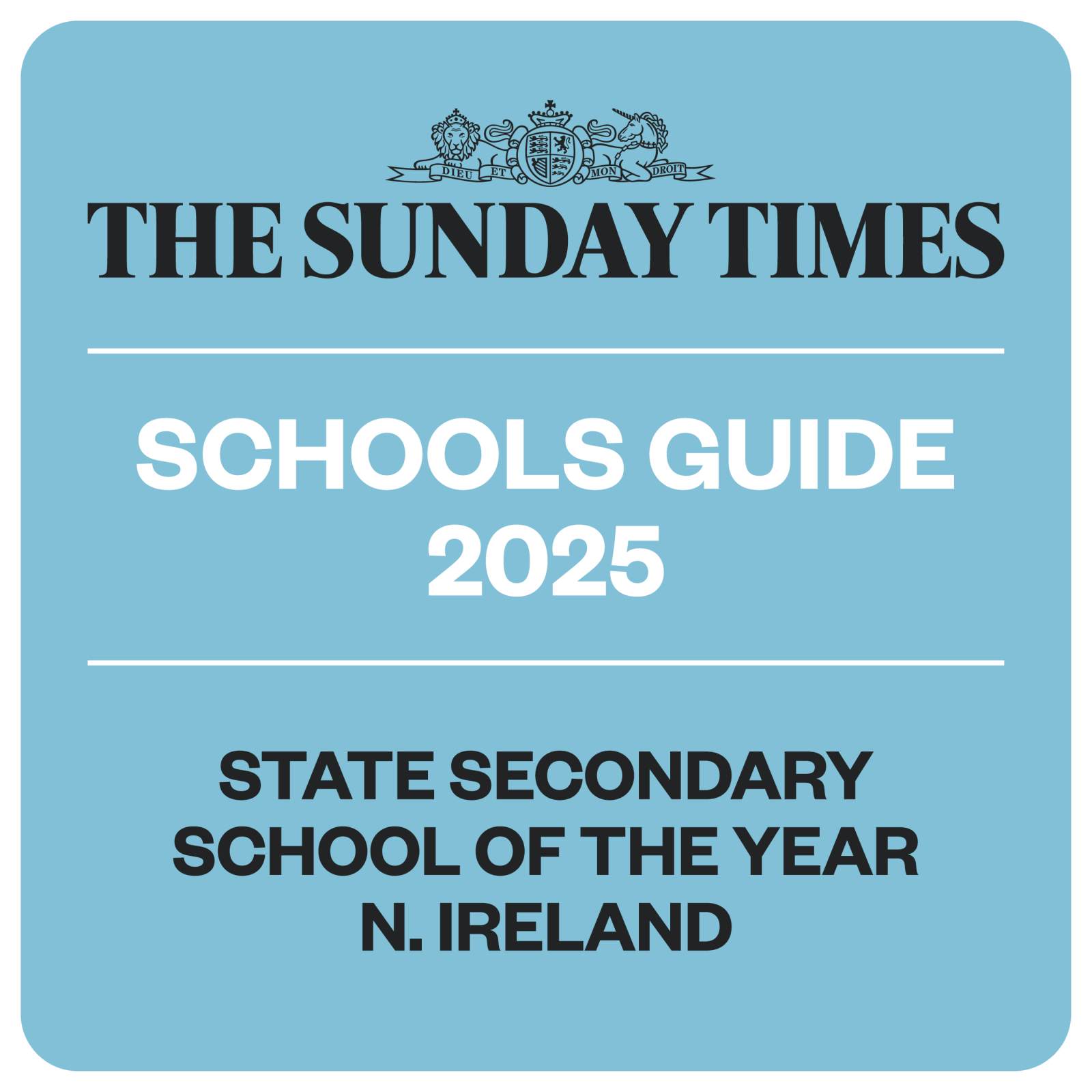Further Mathematics
SPECIFIC AIMS OF THE DEPARTMENT
EXAM BOARD
CCEA
OVERVIEW OF KEY STAGE 3 CURRICULUM
OVERVIEW OF KEY STAGE 4 CURRICULUM
https://ccea.org.uk/key-stage-4/gcse/subjects/gcse-further-mathematics-2017
The Key Stage 4 Further Mathematics curriculum is based on the CCEA GCSE Further Mathematics course.
Aims and Key Features
This specification aims to encourage students to:
• develop further their mathematical knowledge, skills and understanding;
• select and apply mathematical techniques and methods to mathematical, everyday and real-world situations;
• reason mathematically, interpret and communicate mathematical information, make deductions and inferences, and draw conclusions;
• extend their base in mathematics from which they can progress to:
o higher studies in mathematics;
o studies such as science, geography, technology or business, which contain a significant requirement in mathematics beyond Higher Tier GCSE Mathematics;
• design and develop mathematical models that allow them to use problem-solving strategies and apply a broader range of mathematics to a variety of situations.
The following are important features of this specification.
• It is designed to broaden the experience of students whose mathematical ability is above average and who would like to:
o study mathematical courses at AS/A level;
o study other courses at AS/A level that require mathematics beyond GCSE Higher Tier;
o extend their knowledge of mathematics.
• It gives students the appropriate mathematical skills, knowledge and understanding to help them progress to further academic and vocational study and to employment.
Course Structure
This specification comprises three units. All units are assessed through an external written examination in the form of a single question-and-answer booklet that includes a formula sheet.
Unit 1 Pure Mathematics - 50% - 2 hours
Unit 2 Mechanics - 25% - 1 hour
Unit 3 Statistics - 25% - 1 hour
The units address the three assessment objectives for this specification:
• AO1: Use and apply standard techniques;
• AO2: Reason, interpret and communicate mathematically;
• AO3: Solve problems in mathematics and other contexts
Subject Content
Some of the content associated with each unit appears below.
Unit 1 Pure Mathematics
Algebraic Fractions, Algebraic Manipulation, Completing the Square, Simultaneous Equations, Quadratic Inequalities, Trigonometric Equations, Differentiation, Integration, Logarithms, Matrices
Unit 2 Mechanics
Kinematics, Vectors, Forces, Newton’s Laws of Motion, Moments
Unit 3 Statistics
Central Tendency and Dispersion, Probability, Binomial Distribution, Normal Distribution, Bivariate Analysis
OVERVIEW OF KEY STAGE 5 CURRICULUM
https://ccea.org.uk/post-16/gce/subjects/gce-further-mathematics-2018
The Key Stage 5 Further Mathematics curriculum is based on the CCEA GCE Advanced Subsidiary (AS) and Advanced (A level) GCE courses in Further Mathematics.
Aims
This specification aims to encourage students to:
• understand mathematics and mathematical processes in a way that promotes confidence, fosters enjoyment and provides a strong foundation for progress to further study;
• extend their range of mathematical skills and techniques;
• understand coherence and progression in mathematics and how different areas of mathematics are connected;
• apply mathematics in other fields of study and be aware of the relevance of mathematics to the world of work and to situations in society in general;
• use their mathematical knowledge to make logical and reasoned decisions in solving problems both within pure mathematics and in a variety of contexts, and communicate the mathematical rationale for these decisions clearly;
• reason logically and recognise incorrect reasoning;
• generalise mathematically;
• construct mathematical proofs;
• use their mathematical skills and techniques to solve challenging problems that require them to decide on the solution strategy;
• recognise when they can use mathematics to analyse and solve a problem in context;
• represent situations mathematically and understand the relationship between problems in context and mathematical models that they may apply to solve these;
• draw diagrams and sketch graphs to help explore mathematical situations and interpret solutions;
• make deductions and inferences and draw conclusions by using mathematical reasoning;
• interpret solutions and communicate their interpretation effectively in the context of the problem;
• read and comprehend mathematical arguments, including justifications of methods and formulae, and communicate their understanding;
• read and comprehend articles concerning applications of mathematics and communicate their understanding;
• use technology such as calculators and computers effectively, and recognise when such use may be inappropriate;
• take increasing responsibility for their own learning and the evaluation of their own mathematical development.
Course Structure
The course has been divided into four units: two units at AS and two units at A2. All units are assessed through external written examinations
AS 1: Pure Mathematics - 1hr 30mins - 50% of AS (20% of A level)
AS 2: Applied Mathematics - 1hr 30mins - 50% of AS (20% of A level)
A2 1: Pure Mathematics - 2hrs 15mins - 30% of A level
A2 2: Applied Mathematics – 2hrs 15mins - 30% of A level
Content
This section sets out the content and some of the learning outcomes for each unit.
Year 13
Unit AS 1 Pure Mathematics
Algebra and Functions - Roots of Quadratic Equations
Complex Numbers - Cartesian and Modulus-Argument Forms, Argand Diagrams, Solving Quadratic, Cubic, Quartic Equations
Matrices - Linear Transformations, Systems of Simultaneous Linear Equations
Vectors - Equation of Line, Scalar and Vector Products, Equation of Plane, Area and Volum
Unit AS 2 Applied Mathematics Section A: Mechanics 1
Hooke’s Law - Elastic Strings and Springs
Work and Energy - Work Done by Force, Principle of Conservation of Mechanical Energy, Work-Energy Principle
Power - Vehicles in Motion, Pumps
Circular Motion - Motion in Horizontal Circle, Conical Pendulum, Banked Corners
Unit AS 2 Applied Mathematics Section C: Statistics
Sampling - Simple Random, Stratified, Quota, Cluster, Opportunity
Probability - Permutations and Combinations
Statistical Distributions - Geometric Distribution, Poisson Distribution, Discrete and Continuous Probability Distributions, Coding
Bivariate Distributions - Product Moment Correlation Coefficient, Least Squares Regression Analysis
Year 14
Unit A2 1 Pure Mathematics
Proof - Mathematical Induction
Further Algebra and Functions - Partial Fractions, Summation of Series, Maclaurin Series
Complex Numbers - De Moivre’s Theorem, Complex Roots of Unity
Further Calculus - Improper Integrals, Integration using Partial Fractions, Repeated Integration by Parts, Simple Reduction Formulae
Polar Coordinates - Curve Sketching, Area Enclosed by Polar Curve
Hyperbolic Functions - Differentiation and Integration of, Logarithmic Forms of Inverse Hyperbolic Functions
Differential Equations - Integrating Factor Method, First and Second Order Differential Equations
Unit A2 2 Applied Mathematics Section A: Mechanics 1
Simple Harmonic Motion - Simple Pendulum, Elastic Strings and Springs
Damped Oscillations - Model using Second Order Differential Equations
Centre of Mass - Systems of Particles and Rods, Laminae
Frameworks - Problems involving Tension and Thrust
Further Circular Motion - Banked Corners including Sliding and Overturning
Unit A2 2 Applied Mathematics Section B: Mechanics 2
Further Kinematics - Kinematics in 3D, Variable Acceleration
Further Centre of Mass - Laminae and Solids, Suspended Bodies, Sliding/Toppling Problems
Force Systems - System of Coplanar Forces, Couples
Restitution - Elastic Collisions
The A2 assessment units include some synoptic assessment, which encourages candidates to develop their understanding of the subject as a whole.
The A2 assessment units provide opportunities to demonstrate higher order thinking skills by incorporating:
• more demanding unstructured questions;
• questions that require candidates to make more connections between sections of the specification.












